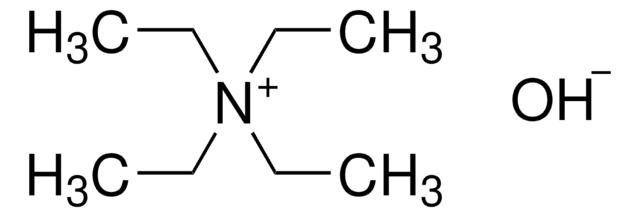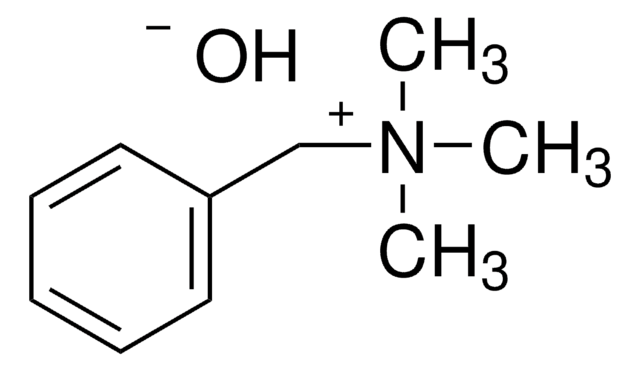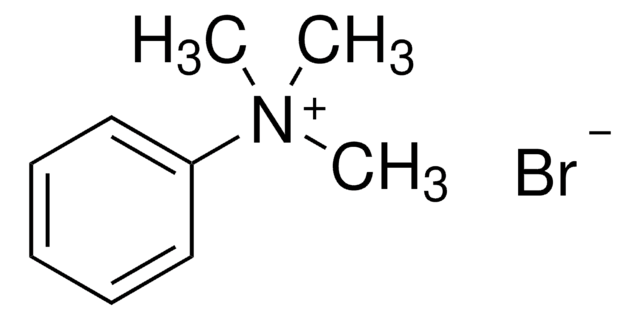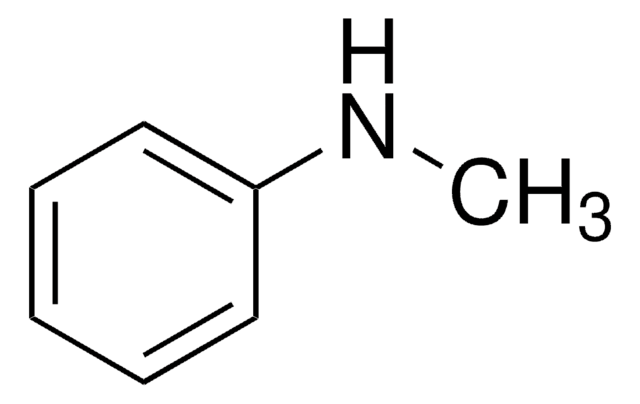79267
Trimethylphenylammonium hydroxide solution
~25% in H2O (1.68 M)
Sinónimos:
Phenyltrimethylammonium hydroxide, TMAH
About This Item
Productos recomendados
Formulario
liquid
Nivel de calidad
concentración
~25% in H2O (1.68 M)
índice de refracción
n20/D 1.395
cadena SMILES
[OH-].C[N+](C)(C)c1ccccc1
InChI
1S/C9H14N.H2O/c1-10(2,3)9-7-5-4-6-8-9;/h4-8H,1-3H3;1H2/q+1;/p-1
Clave InChI
HADKRTWCOYPCPH-UHFFFAOYSA-M
¿Está buscando productos similares? Visita Guía de comparación de productos
Categorías relacionadas
Descripción general
Aplicación
Palabra de señalización
Danger
Frases de peligro
Clasificaciones de peligro
Eye Dam. 1 - Skin Corr. 1B
Código de clase de almacenamiento
8A - Combustible, corrosive hazardous materials
Clase de riesgo para el agua (WGK)
WGK 3
Punto de inflamabilidad (°F)
Not applicable
Punto de inflamabilidad (°C)
Not applicable
Equipo de protección personal
Faceshields, Gloves, Goggles, type ABEK (EN14387) respirator filter
Elija entre una de las versiones más recientes:
¿Ya tiene este producto?
Encuentre la documentación para los productos que ha comprado recientemente en la Biblioteca de documentos.
Los clientes también vieron
Nuestro equipo de científicos tiene experiencia en todas las áreas de investigación: Ciencias de la vida, Ciencia de los materiales, Síntesis química, Cromatografía, Analítica y muchas otras.
Póngase en contacto con el Servicio técnico










